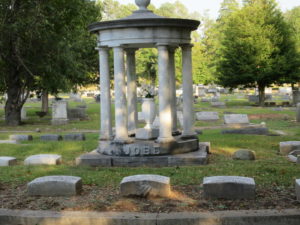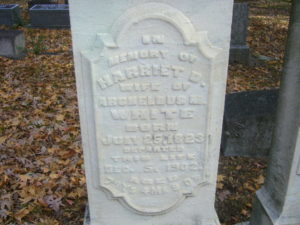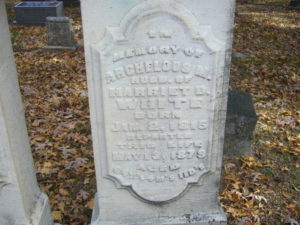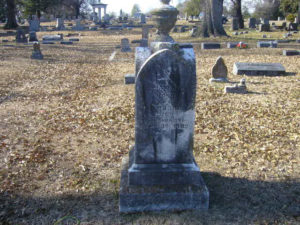Hollywood’s abundant Classical Revival markers often combine artistic and religious elements and symbolism. Although the obelisk and the false crypt (or coffin markers) had been used previously, the 1922 discovery of Egyptian King Tutankhamen’s tomb sparked renewed admiration for Egyptian art forms, particularly as expressed in funerary art. Jackson’s citizens joined the nationwide trend in adapting symbols and designs from antiquity, as the numerous obelisks and urns in Hollywood Cemetery attest. By selecting themes from antiquity, Jackson’s wealthier residents exhibited their culture and refined tastes in their grave markers as well as in their homes. Rather than eschewing Egyptian art forms as pagan, Christians adopted many to symbolize elements of their own faith.
Because the soaring obelisk pointed heavenward, it became a symbol for new life. One exquisite draped urn, for D. J. Pearcy (died 1928) [Section E, Lot 7], adorns a ten-foot-tall obelisk atop a three part, square limestone base. Not only is the urn draped, but the shaft of the obelisk is also shrouded in a fringed length of drapery with one corner doubled back over the top of the obelisk beneath the urn. The folds of the drapery shroud cascade nearly to the shaft’s base, culminating in a three-quarter-relief tassel, denoting mourning. Urns symbolized a container for tears of the deceased’s loved ones as well as death of an adult.
Classical Revival-influenced funerary art (circa 1880-1930) emphasized Greek and Roman column styles. Hollywood Cemetery has several markers exhibiting Classical elements. Although American architecture experienced the Greek Revival period in the three decades before the Civil War, the Greek temple form remained popular, particularly in the South, into the twentieth century. One of Hollywood’s mausoleums, the Warmack-Ezzell [corner Main Avenue and Holly, E no number], is a fine example of the Greek Temple design.

Photo by Cristie Wright
Another beautiful Classical Revival style monument is the Jobe family’s white marble gazebo with its Tuscan colonnade marking [Section E, Lot 16]. Andrew K. Jobe who died 1906 was a Jackson jeweler and the layout and stones in his family plot resemble jewelry design with a large jewel (the gazebo) surrounded by complementary smaller baguette gems (the drum markers). Although the family members’ markers ringing the gazebo are modest drum styles, the impressive gazebo imbues the entire section with elegance and refinement.

Photo by Cristie Wright
A smaller Classically influenced marker is the Roman arch in Section A for Archelous M. and Harriet D. White (died 1879 and 1902, respectively) [Section A, Lot 3]. The arch rests atop two marble rectangular pillars separated by approximately four inches of empty space. The pillars share a common pedestal and rest on a rectangular stone slightly larger than the pedestal. Centered at the top of the arch is a horizontal oval cartouche. The text plates are raised, vertical rectangles, sinuous top with concave shoulders and corners.

Photo by Cristie Wright

Photos by Cristie Wright

Photos by Cristie Wright
Combination Gothic and Classical Revival stylistic elements were often used in funerary art. One example is the truncated obelisk for William Hardy (died 1889) [Section E, Lot 81]. An urn tops the shaft where the Gothic arch peaks on all four sides of obelisk.


Photo by Cristie Wright


